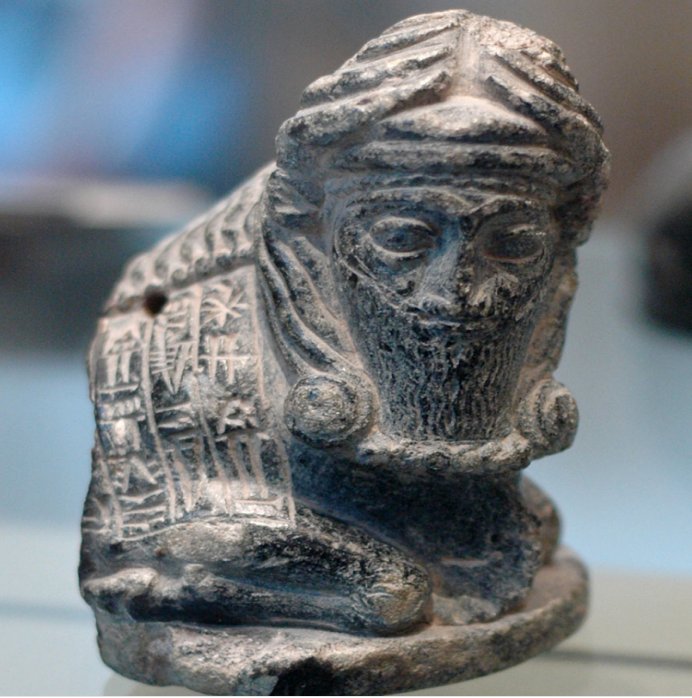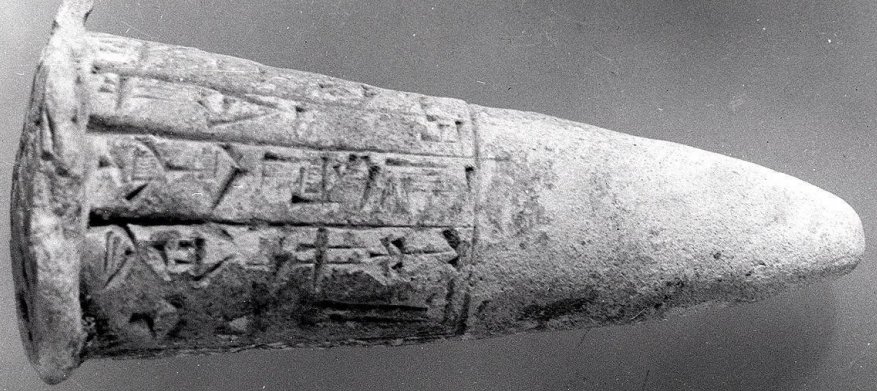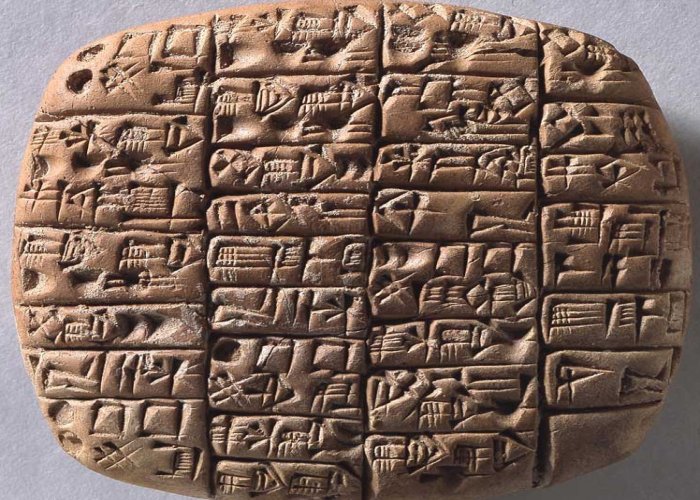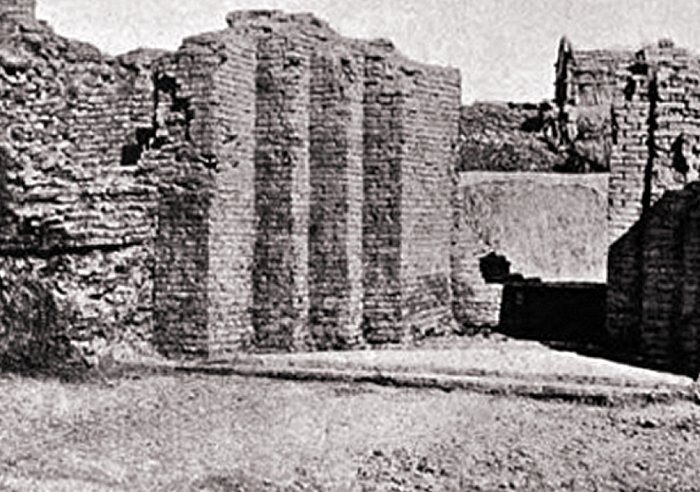A. Sutherland – AncientPages.com – Modern Tello (Telloh) was an ancient Sumerian city of Girsu, located between the Tigris and Euphrates and about 20-25 kilometers north-northwest of Lagash in southern Mesopotamia (now southern Iraq).
 Bull statuette (human-headed) dated to about 2120 BC from ancient city of Girsu. Sumer. Height 11.8 cm (4.5 inches), width 8cm (3 inches, Depth 7.7 cm (3 iches). Image credit: Louvre, Paris
Bull statuette (human-headed) dated to about 2120 BC from ancient city of Girsu. Sumer. Height 11.8 cm (4.5 inches), width 8cm (3 inches, Depth 7.7 cm (3 iches). Image credit: Louvre, Paris
Today, the site is marked by several mounds, about 0.9 miles in diameter.
Once, Girsu was a part of the Lagash city state. It was an important Sumerian city with many temples devoted to Ningirsu, chief god of Lagash; it served as the capital during the reign of Gudea in the 22th century BC
The city, which name is written in Sumerian as ‘Shirpurla’, flourished during the Early Dynastic period (2500-2300 BC) but it was even later continuously inhabited until the 2nd century BC. When the capital was moved, the city remained an important religious center.
It was the first place in Mesopotamia, to offer evidence of Sumerian civilization, in form of a large archive of thousands of cuneiform tablets with records of economic, administrative and commercial matters of the city.
 Votive cone with cuneiform inscription of Gudea: dedicated when Gudea built the Eninnu temple for the god Ningirsu, dated to ca. 2090 BC. Image credit: The Met
Votive cone with cuneiform inscription of Gudea: dedicated when Gudea built the Eninnu temple for the god Ningirsu, dated to ca. 2090 BC. Image credit: The Met
Despite successful excavations in the 1870s, carried out by French archaeologist, Ernest de Sarzac, who delivered physical evidence for the existence of a pre-Babylonian civilization, the ruins of Girsu were systematically looted.
It is estimated that only about 4,000 tablets were excavated by the French team but at least 35,000-40,000 (!) of them ended up on diverse markets and later in private collections.
The findings revealed by M. de Sarzec included a portrait statue of Gudea, and several other his statues and his dynasty, carved in very hard diorite, the remains of a ziggurat, the ruins of the temples of Ningirsu E-ninnu, built by Gudea, and that of the goddess Bau (also known as Gula), a Babylonian goddess of healing, the consort of Ninurta and in Akkadian mythology.
 Cuneiform Tablet from Girsu (modern: Tello), dated to 2370 BC. Image credit: Max Planck Gesellschaft
Cuneiform Tablet from Girsu (modern: Tello), dated to 2370 BC. Image credit: Max Planck Gesellschaft
A large silver vase (ca.2400 BC ) dedicated to god Ningirsu by Entemena, king of Lagash, and the famous “stele of the Vultures” celebrating a victory by Eannatum, we described earlier in one of our articles, are among the finest discoveries.
Another beautiful artifact excavated at Girsu and dated to about 2120 BC, is a bull statuette with human head, 11.8 cm (4.5 inches) high, 8cm (3 inches wide. The figurine is now stored at Louvre, Paris, France.
Most we have learned about the ancient city of Girsu comes from deciphered clay tablets. It is not much because as we mentioned earlier, many thousands of tablets were stolen from the site, and many others were never found.
In “A History of Sumer and Akkad”, King L.W. describes the cuneiform tablets as they were found by M. de Sarzec:

Telloh doorway erected by Gudea (c. 2100 BC). Leonard William King (8 December 1869 – 20 August 1919) – A History of Sumer and Akkad, by Leonard William King Published 1910,
Public Domain
“… baked clay tablets from Tello, which date from this period are extensive lists of cattle, sheep, and ᴀsses, owned by the temples, and detailed tablets of accounts concerning the administration of the rich temple lands.
It is interesting to note that these documents, which from the nature of their clay and the beauty of their writing are among the finest specimens yet recovered in Babylonia, were found by M. de Sarzec in the original archive-chambers in which they had been stored by the Sumerian priests.
Though they had apparently been disturbed at some later period, the majority were still arranged in layers, placed one upon tlie other, upon benches of earth which ran along both sides of narrow subterranean galleries…”
Written by – A. Sutherland AncientPages.com Staff Writer
Updated on July 11, 2023
Copyright © AncientPages.com All rights reserved. This material may not be published, broadcast, rewritten or redistributed in whole or part without the express written permission of AncientPages.com
Expand for references
References:
The Historians’ History of the World in Twenty-Five Volumes
MET
Trivium Art History
G. Algaze, Ancient Mesopotamia at the Dawn of Civilization





